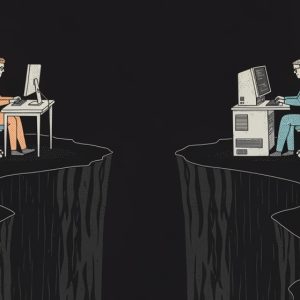
With the world’s eyes on Glasgow for this week’s COP26 summit, many UK technology leaders will be mulling their own contribution to the decarbonisation agenda. As our Technology Leaders Agenda study revealed earlier this year, 71% of IT departments have sustainability objectives, most commonly the reduction of carbon emissions from ICT equipment.
Last year, an article on the environmental impact of video streaming prompted Avril Chester, chief technology officer at the Royal Institute of British Architects, to consider her own organisation’s IT carbon footprint. She found that many of her peers were in a similar position but lacked the information and guidance they needed to get started. Alongside consulting CIO Caroline Morgan, Chester founded a wiki to share knowledge and resources among the UK tech leadership community. Chester spoke to Tech Monitor to share what she’s learned so far, and how she is tackling IT sustainability at RIBA.

Sustainability and decarbonisation have jumped up the CIO agenda in the past year, says RIBA CTO Avril Chester. (Photo by batuhan toker/iStock)
In early 2020, Chester read an article from climate think tank the Shift Project, asserting that online video streaming was responsible for nearly 300m tonnes of CO2 in 2018 – as much as Spain’s entire annual footprint. “I took a sharp intake of breath – I hadn’t realised,” she recalls. The realisation prompted Chester to connect with other CIOs to understand how they are tackling the environmental impact of IT.
Many of her peers were asking similar questions, she found. Even in the past year, Chester says, sustainability has risen on the agenda. “This year, I’ve seen a definite turn,” she says. “I’ve been to a number of CIO conversations and roundtables where sustainability and decarbonisation are coming much more to the fore. [CIOs are asking] ‘What can we do as tech leaders? How can we look at what we’re doing within our departments and what we’re using?'”
This year, I’ve seen a definite turn. Sustainability and decarbonisation are coming much more to the fore.
These peer-to-peer conversations surfaced many facts and insights, and Chester and Morgan realised they should be collected somewhere. “[We realised] we need a central place where people can learn, contribute, and share case studies. There’s lots we don’t know, and we’re keen to learn, so as an industry, let’s plug it into one place so that we can learn from each other and take action.”
Chester and Morgan set up the Tech Carbon Impact wiki, inviting tech leaders to contribute useful information and experience. “The response has been fantastic,” she says. “We’ve got lots of people thinking about how they can contribute. And we’ve created a strategy group of CIOs to look at how we can grow the wiki, how we keep it up to date, what’s the best way to [run] it.”
Insights that Chester has learned from the project include the finding that switching the camera off during a video conference reduces its carbon footprint by 96%. This has prompted her to change how she manages catch-ups with her colleagues. “If I’m having a regular one-to-one [with a colleague] and we’re just doing an update, we’ll stretch our legs and do a walking call. We’re getting some fresh air and we’re saving our carbon footprint as well.”
Incorporating decarbonisation into IT department objectives
At RIBA, Chester has incorporated decarbonisation into the IT department’s mission and objectives. “One of the first things we did was to [include] a paragraph into every single IT job description” on the need to reduce emissions. “Regardless of what job you do within technology, we all have a duty to look at sustainability and green IT,” she says.
A departmental brainstorm explored potential sustainability objectives for the technology function, which then selected the goal of deciding how to measure IT’s carbon footprint. “By the end of the year, I’d like to understand our starting point, because then we can start addressing it,” says Chester.

Despite initiatives such as the Tech Carbon Impact wiki, there is a need for more information and coordination in the technology sector, Chester says. The airline industry has a standard protocol for calculating the carbon footprint of journeys, she says. “There’s not even a standard calculation in the tech world for you’ve got this many users, you’re going to be [producing this much carbon]. None of those standards exist for us all to follow.”
“I’d love more organisations to come together to really define what the top priorities are,” Chester concludes. “The first thing we need to do as an industry is agree what we’re going to do and how we’re going to measure it.”






